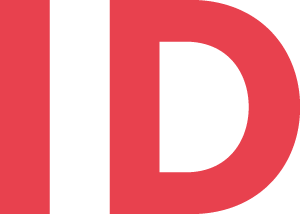How content leaves a website
Why the classic content management system is no longer the pioneering tool it once was
The digital showcase
For individual owner-operators and major corporations alike, a company’s website today is its business card, showcase and digital point of contact for services and products – all in one. They provide ways to get in contact, give an overview of the company’s activities, offer a smorgasbord of articles on a given topic, facilitate interaction with the user and remain accessible for readers, customers and anyone else who might be interested – anywhere, any time.
Dynamic, interactive and versatile
The requirements of a company’s online presence continue to grow. Static text on its own has long been insufficient to hold a visitor’s attention. Pictures, videos and social plug-ins are diversifying content; now a dynamic entity, content needs to offer something different on each visit.
The reader is engaged; the site asks their opinion. Interaction is a prerequisite, and user participation in online goings-on has become the norm. We vote, comment and follow the flow of information. This process is now often a passive one, with “relevant” content automatically presented to users. The content is supplemented by blogs, messaging systems or content from a variety of different portals.
From the digital magazine to the Semantic Web
Just as the Internet has evolved, so too have consumers: no longer mere consumers, they have become “prosumers”– producers and consumers simultaneously. Co-creation is a central focus of Web 2.0. Yet the evolution of content and technology goes further than this: the Semantic Web pursues an approach in which content is not only made comprehensible for human users but also made reusable in different contexts through machine-processable data and connections.
The online editor’s toolkit
Irrespective of whether a website or news portal is run by its owner or by an agency, in most cases a content management system (CMS for short) is used to manage and maintain its content.
These systems make it straightforward for several authors to manage and edit the contents of a website, blog or news portal – without the need for any knowledge of programming.
There are a whole host of such systems. Names like Wordpress, Joomla and Typo3 are names well-known to online editors and website developers. Yet the quality of a CMS is defined by the extent to which it displays content in an attractive and representative manner, provides a range of design options, meets the author’s requirements, and simplifies content entry – all the while remaining flexible enough to adapt to future changes.
Content maintenance is certainly one key aspect; yet preparing content in terms of SEO and connections with other systems and interfaces are also features expected of a good CMS today.
These regards also sort the wheat from the chaff. At Identum, we made Drupal our pet project and now benefit from the numerous advantages that the open source CMS offers.
Drupal as a starting point
With the help of Drupal, we develop websites that are both flexible and highly sophisticated. At Identum, we consciously took the decision to use an open system; as a result, we continue to meet the requirements of the ever-growing and evolving Internet. The system’s flexible modular functionality and design means it can be tailored to each customer’s requirements. Users are integrated at a very early stage in the development cycle, getting to know the system during its construction and actively shaping its creation.
This ability to rise to the requirements and specifications of each individual customer makes Drupal a real all-round talent among content management systems. No matter whether a small company website with 20-30 pages or a major portal with millions of users and several million monthly page impressions, Drupal’s scalability and load distribution makes it more than capable of handling large visitor flows. Prime examples include the German newspaper portal Zeit Online, the BBC website or that of the White House’s site. There’s nothing more frustrating than a website that is unavailable due to an unreliable system.
Sharing is Caring
Using open source and making the source text publicly available makes it possible for a large developer community to shape Drupal’s development.
This approach has created a sort of ecosystem around the CMS that continuously releases new expansions and updates, ensuring the system’s continued existence. Identum is an active member of the Austrian Drupal community, regularly contributes self-programmed modules that other website operators can also use.
A content platform as a meta CMS
Drupal’s modular structure makes it more of a content management framework (CMF for short). The use and development of the required modules, along with its granular configuration, together make it possible to build a CMS following the modular design principle that enables users to publish and manage online content, ensuring it remains target-oriented at all times.
The classic website – with a title, introductory text and body text – no longer constitutes the core of the Internet. Content is structured and provided in such differentiated and flexible formats that a classically structured CMS with a standard set-up simply doesn’t meet today’s requirements.
By contrast, as a content platform Drupal is the central point for a range of different channels through which content can be presented to the consumer. Whether on the website or in the online shop, via the RSS feed, social media portals or as a source of information for a chatbot – the client can shape the design, and the developer then deals with its implementation.
Drupal’s stated aim is “to democratise web publishing and web development” – which it does with some success!


